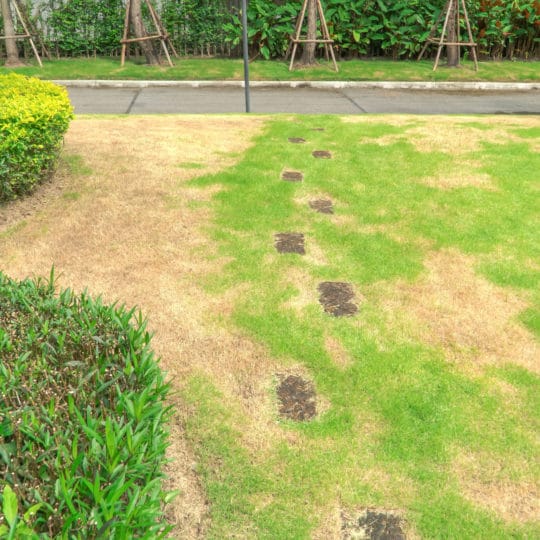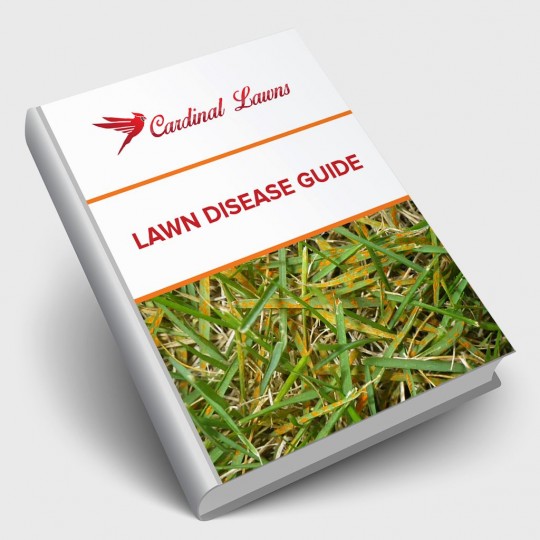10 Most Common Lawn Diseases
Learn the Signs & How to Stop it
Posted
April 16, 2020

Now that your lawn is coming back to life, it may be easier to see where the problem areas are. Here are some signs of the most common lawn diseases and what you can do to get it back to green.
Common Lawn Diseases for Cool-Season Grass
Depending on the disease, you may not see any signs of trouble right away, but there are still precautions to take and ways to revive your lawn. Here’s what to watch for:
Brown Patch
Affects: mostly cool-season turf in the early summer when heat and humidity are high.
Signs: brownish-yellow patches of dead grass.
Solution: fungicides provide up to 28 days of control if applied before signs appear. Don’t over-water, work to improve soil drainage, and mow regularly to keep grass low as well.
Powdery Mildew
Affects: mostly cool-season grass in shady areas during cool, humid climates of the spring and fall.
Signs: white dusty appearance on leaf blades in shaded areas.
Solution: apply fungicide to help prevent it. Increase the amount of sunlight in affected areas by pruning trees and shrubs.
Red Thread
Affects: cool-season grass.
Signs: red or pink webbing.
Solution: as a sign of low levels of nitrogen in the soil, it’s time to fertilize.
Summer Patch
Affects: Kentucky bluegrass in hot, humid weather of late spring/early summer.
Signs: circular patches of tan-colored turf.
Solution: preventive fungicide helps suppress the disease of applied in the late spring. Once symptoms are visible, frequent irrigation to help the turf recover is more helpful.
Other Common Lawn Disease
Large Patch
Affects: mostly warm-season turf in spring or autumn when the weather is overcast, cool, and moist.
Signs: small patches grass with off-colored edges.
Solution: apply fungicides at the first sign or previous spring/fall.
Pythium Blight
Affects: newly seeded grass in poorly drained areas or overly damp and humid conditions.
Signs: circular areas with gray, drenched appearance.
Solution: improve drainage and irrigation situation. Only use fungicides before signs appear.
Pink snow mold
Affects: grass in consistently cool, humid weather.
Signs: small, circular patches with soaked appearance around the edge; pink hue for a short period of time. Turns bleached shade in dry conditions.
Solution: multiple applications of fungicide may be needed if conditions persist.
Dollar Spots
Affects: grass in warm, humid temperatures in late spring to late fall.
Signs: small, round, coin-sized brown spots.
Solution: proper fertilizing and aeration with deep, infrequent watering.
Rust
Affects: grass in warm, humid conditions.
Signs: rust-colored spots with yellow flecks on grass blades.
Solution: apply preventative fungicide, continue to mow regularly, and avoid overwatering. Maximize light exposure and airflow to shaded areas. Consider planting rust-resistant grass seeds if it becomes a regular problem.
Fairy Ring
Affects: naturally occurring arcs of mushrooms in grassed areas or forests.
Signs: circular formations up to 30 feet in diameter. Either a darker green flush along an area of dying grass or a grouping of mushrooms.
Solution: since they don’t cause much damage and are very hard to get rid of, they are most often left alone.
Lawn Disease Prevention
Since most of these diseases are harder to treat once signs appear, it’s best to take preventative measures: proper mowing, watering and fertilizing. Keep up with a lawn care plan depending on what type of grass you have. For more information on the right plan for your yard, contact Cardinal Lawns.

Download Your FREE Lawn Disease Guide
Even the most manicured landscapes are susceptible to lawn disease. Take some time to learn about identification and removal before one takes over your lawn. This handy guide teaches you how to spot common lawn diseases as well as how to properly treat them.